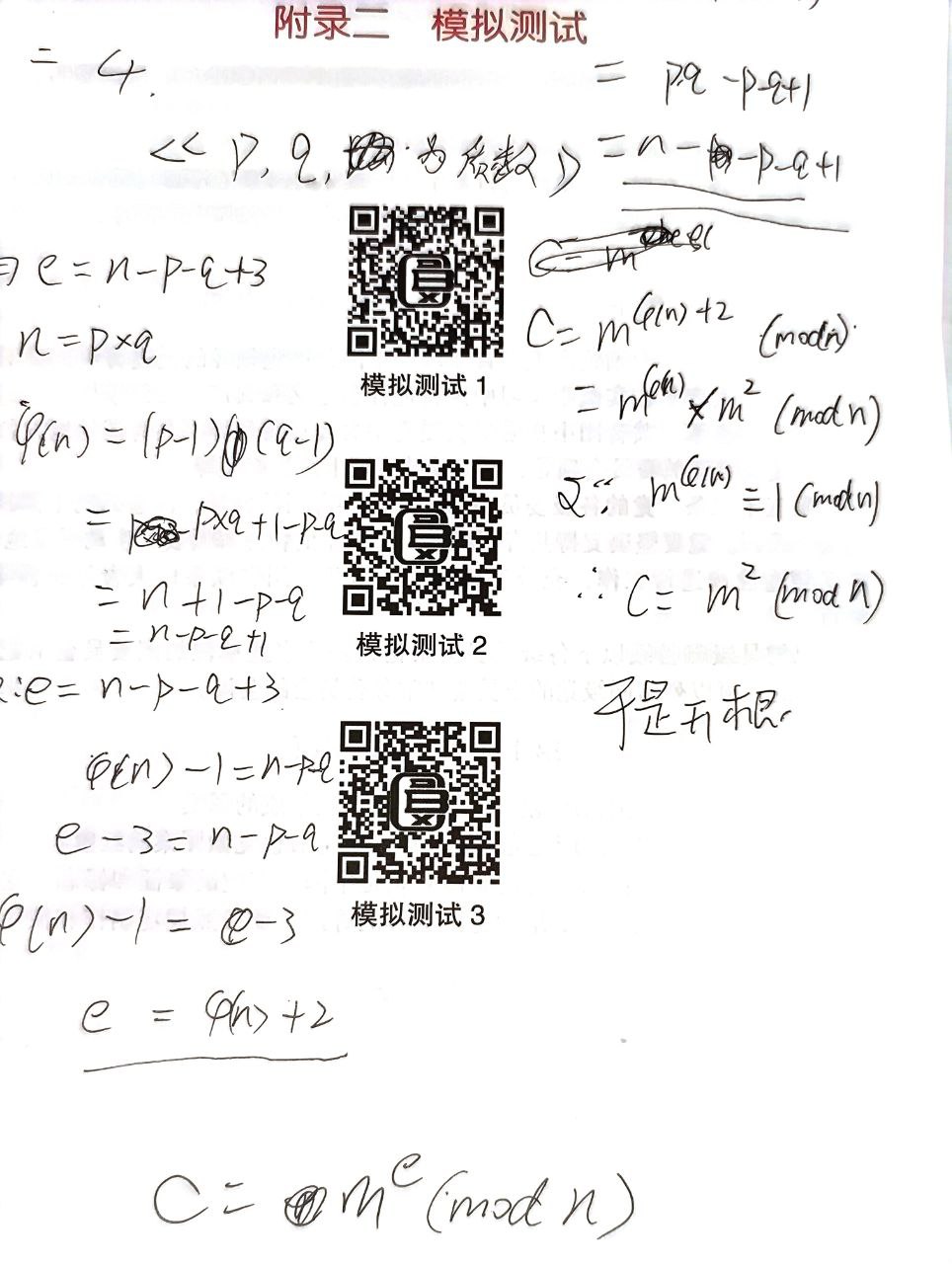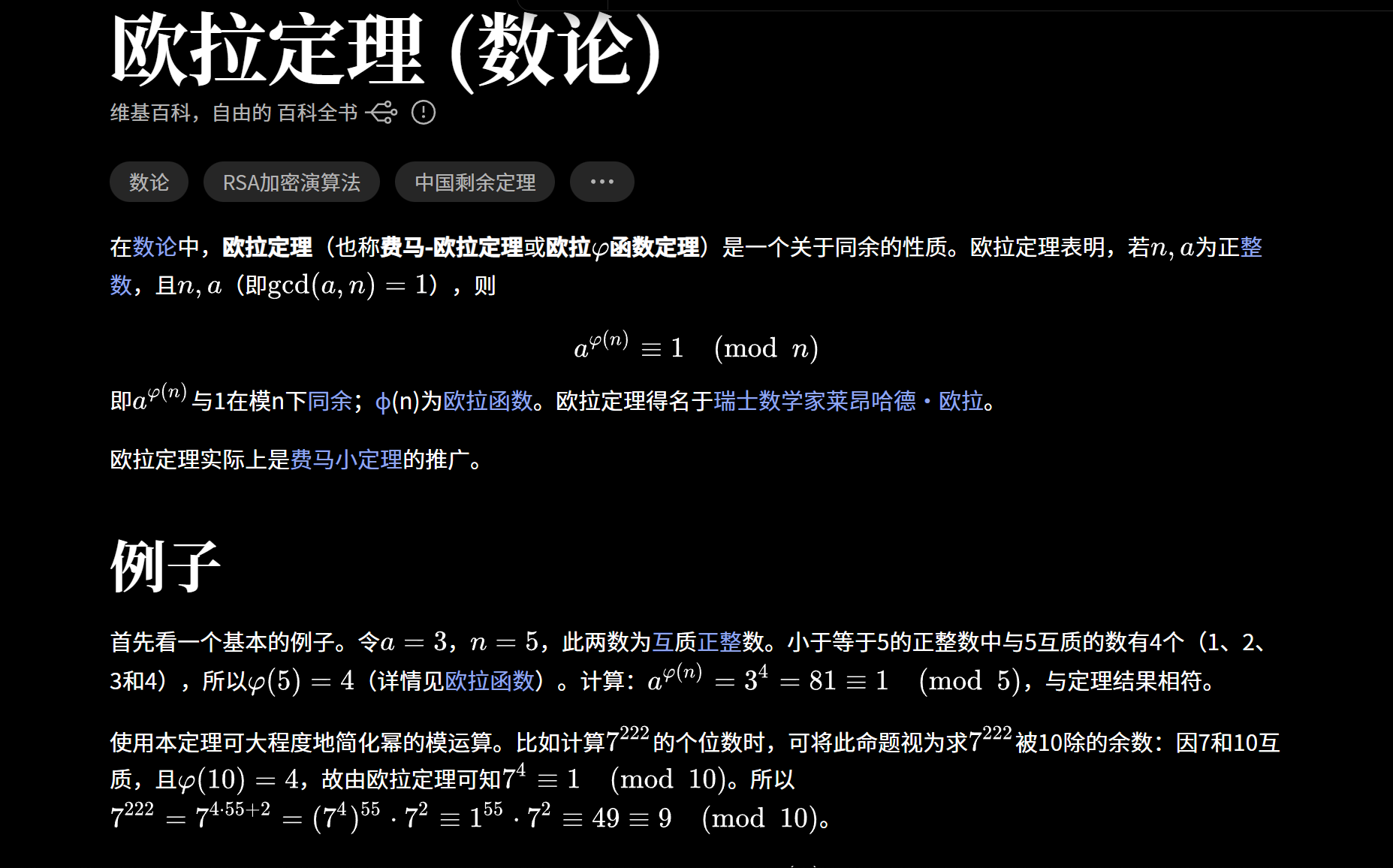LitCTF2023
小小小
Background
源码星球上有一种有趣的游戏「小,小小小」。
Description
给你 张卡片,第 张卡片上写着 。
定义一个包含 张卡片的卡片组分值为:
其中 。
卡片的顺序显然会影响其分值,所以你需要将其以某种方式排列以得到最小的分值。
因为游戏要求,你还需要对卡片的每个前缀计算将其排列后能得到的最小分值。
Format
Input
第一行一个正整数 ,表示卡片数。
第二行 个整数,第 个表示 。
Output
行每行一个整数,即你能从卡片 中得到的最小分值。
Samples
in1
5
5 3 4 4 7
out1
0
4
4
4
8
Limitation
对于 的数据,。
Prime
题目背景
打比赛怎么能没有质数呢?
题目描述
给你一个正整数 ,让你求最小的正整数 ,使得 。
但由于 很大,将给出 和 ,表示 ,其中 是从小到大第 个质数。
Format
输入格式
第一行一个正整数 。
第二行包含 个非负整数,其中第 个数字表示 。
输出格式
输出共 行,每行包含一个数字,表示该组数据的答案。
样例
input1
5
1 1 1 1 1
output1
11
input2
12
1 3 4 6 7 9 10 12 13 15 16 18
output2
666
提示
有一个绝妙的解释,但是这里太小,写不下。
保证 。
SEEM和探姬的游戏
题目描述:
SEEM和探姬发明了一个新游戏。
游戏在树上进行,每个点有点权。
每次他们会选两个点 ,并将一个棋子放在点 上。
他们会轮流移动棋子,到过的点不能再走,并且他们会保证最后移到 上。
SEEM先手,分数一开始为 。
若当前是SEEM移动的,分数就减去到达点的点权,否则就加上到达点的点权。
SEEM想要答案尽可能小,探姬会让答案尽可能地大。
设最后的分数是 。
求 。
Format
输入格式
第一行一个数 ,表示树的点数。
第二行 个数, 表示第 个点的点权。
接下来 行,每行两个数 表示 到 之间有一条边。
输出格式
一个数表示 。
对 取模。
样例
in1
4
-4 1 5 -2
1 2
1 3
1 4
out1
40
in2
8
-2 6 -4 -4 -9 -3 -7 23
8 2
2 3
1 4
6 5
7 6
4 7
5 8
out2
4
提示
数据保证 。
口算题卡_PWN2
from pwn import *
HOST = 'node5.anna.nssctf.cn'
PORT = 28516
def solve_problem(problem):
problem = problem[8:]
problem = problem.replace("?", "")
print(problem)
# 根据题目字符串解析出操作数和操作符
op1, operator, op2 = problem.split()
op1, op2 = int(op1), int(op2)
# 根据操作符计算出答案
if operator == '+':
result = op1 + op2
elif operator == '-':
result = op1 - op2
else:
raise ValueError('Invalid operator: {}'.format(operator))
return result
def eat():
conn.recvline()
# 连接到指定的IP地址和端口号
conn = remote(HOST, PORT, level='DEBUG')
for _ in range(20):
eat()
for i in range(100):
# 接收问题并输出
# 循环十次
problem_msg = conn.recvline() # What is 92 - 15?
print(problem_msg.decode().strip())
# 解决问题并发送答案
answer = solve_problem(problem_msg.decode())
conn.sendline(str(answer).encode())
# 接收回复消息并判断是否回答正确
reply_msg = conn.recvline()
if b'Wrong!' in reply_msg:
print(reply_msg.decode().strip())
break
else:
print('Correct!')
# 输出最终的回复消息
final_msg = conn.recvline()
print(final_msg.decode().strip())
# 关闭连接
conn.close()
欧拉?

其中 又因为的步骤为 欧拉定理

定理中 的条件在此题中来自:
那道题n就两个素因子,都是512bit,m的比特数小于512,肯定互素啊 --KBU
import gmpy2
from Crypto.Util.number import long_to_bytes
n = 115140122725890943990475192890188343698762004010330526468754961357872096040956340092062274481843042907652320664917728267982409212988849109825729150839069369465433531269728824368749655421846730162477193420534803525810831025762500375845466064264837531992986534097821734242082950392892529951104643690838773406549
c = 406480424882876909664869928877322864482740577681292497936198951316587691545267772748204383995815523935005725558478033908575228532559165174398668885819826720515607326399097899572022020453298441
m=gmpy2.iroot(c,2)[0]
print(long_to_bytes(m))